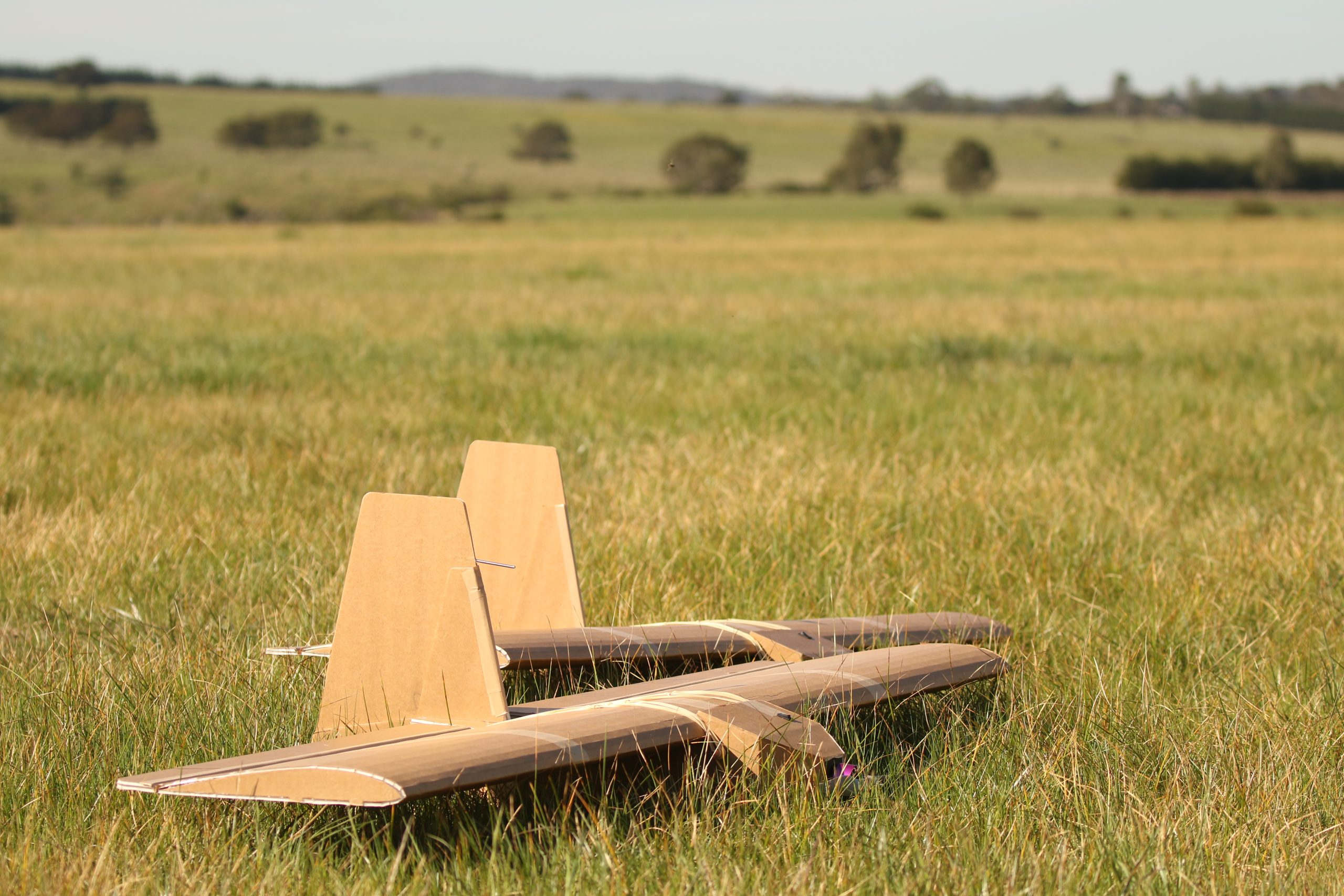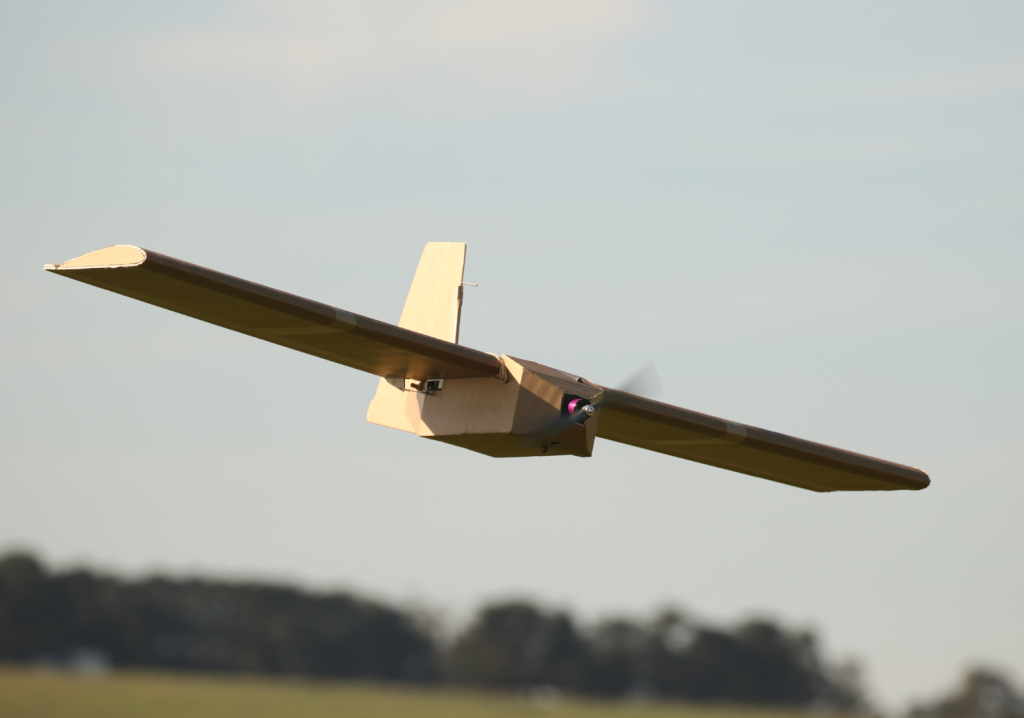How engineers and military strategists are preparing to defend against drones that swarm like bees – and pack a mighty punch.
In a nondescript, low-rise building in the retail and light industrial zone of the Canberra suburb of Fyshwick, thousands of drones are manufactured annually.
The final destinations of these drones, and likely their final resting places, are military training grounds around the globe.
The swarming drones are produced by Boresight, an engineering business that creates products, tools, software and services to emulate threat scenarios for the counter-UAV (unmanned aerial vehicle) sector.
Customers include militaries, government agencies, research institutions and private organisations, all of whom wish to evaluate, test and train against the drone threat.
“We have reached the stage where drones have quickly evolved to become one of the nastiest threats on the battlefield,” said Dr Alexander Hall, aeronautical engineer and Chief Technology Officer of Boresight. “This applies to drones by themselves and in swarms, for surveillance and reconnaissance, and for payload delivery.
“We’ve reached the point where drone swarms are being implemented as a threat in the battle space. They can be used very cheaply and easily to create quite advanced threats that there really is no countermeasure for.”
Three years ago, Hall and his team began working on the production of expendable drones that could be used to practise defending against such threats.
Boresight’s original UAVs came from off-the-shelf drone kits customised for a military application. But it quickly became apparent that such products, which required five hours of labour per drone to produce, were not sustainable in terms of quality and cost.
“This helped us to understand that we needed to have a particular, designed product for the required outcome,” Hall said. “Our evolving market has driven us to dramatically optimise the manufacturing process, not only for cost but also to maintain onshore manufacturing and to do more with the same input.”
That is part of the engineering story that Boresight has to tell, he said.
These days, making a single drone is relatively easy. The challenge is making thousands of drones that all fly the same, that have the ability to fly in a swarm, that customers are happy to shoot out of the sky soon after they buy them, and that therefore have minimal manufacturing costs.

From five hours of labour per drone, the team at Boresight reduced hands-on production time to 15 minutes per drone.
“It has been about creating a system from the ground up that is designed to be cost effective,” Hall said. “That includes things like material choices, manufacturing process choices and component selection, then putting a strong emphasis on design for manufacture in terms of trying to reduce the labour component within the process.”
The core product is a quad-rotor drone that is light enough to be handheld, rugged enough to perform in the most demanding environments and advanced enough to be able to fly in a swarm and complete specific missions.
“We use 3D printing as part of our manufacturing process, so we use a range of various plastics,” Hall said. “We use the 3D printing process in a way that we are engineering for the design requirements. It’s not to simply give a shape, it’s to produce engineered parts at the end of the manufacturing process.
“These parts have quantifiable mechanical properties and quantifiable pass-fail criteria. We’ve taken a proper engineering approach to product development and manufacturing process development.”
The future of war
In March last year, the US Air Force announced a US$6 billion contract, as part of the Collaborative Combat Aircraft (CCA) program, to build more than 1000 uncrewed combat aircraft that will fly missions alongside crewed fighter jets.
Airforce Technology magazine reported that the UAVs would be a “force multiplier” for the US Air Force’s next generation air combat capabilities.
“The CCAs can harness cutting-edge disruptive technologies such as autonomy, machine learning and artificial intelligence (AI) to maximise the safety and performance of current and future fighter fleets for agile combat employment,” the report said.
“The plan is tentatively based on the assumption of teaming two CCAs with each of the 200 NGAD (Next-Generation Air Dominance) platforms and 300 F-35s.”
That means each manned aircraft will travel in a fearsome pack of three or four.
The Asia Times, in September 2023, said the “US drone swarm program could redefine modern war”, citing the US Department of Defence’s Replicator Program, which aims to mass-produce low-cost autonomous air, land and sea drones over an 18 to 24-month period.
Potentially standing in the way of such programs is simple signal-jamming technology that can disrupt communications between networked devices and their commanders.
In response to such threats, the US military has been engineering its own solutions. The Defence Advanced Research Projects Agency (DARPA), via its Rapid Experimental Missionized Autonomy (REMA) program, has developed a platform that enables a drone to “autonomously continue its predefined mission when connection to the operator is lost”.
“Through creating an autonomy adapter that works with all commercial drones, regardless of manufacturer, and by developing mission-specific autonomy that is constantly refreshed and easy to upload prior to a mission, we aim to give drone operators the advantage in fast-paced combat operations,” Dr Lael Rudd, REMA Program Manager, said.
Simple and secure
As advanced as they may seem, drone solutions are partly about getting back to basics and throwing relatively inexpensive and low-tech weapons, in large numbers, at enemy forces and infrastructure.
One example is the “cardboard drone”, which made headlines in the media as one of Ukraine’s newest weapons in the battle against Russian invaders. Australian defence solutions provider SYPAQ was quickly identified as its creator.
“The Corvo Precision Payload Delivery System (PPDS) has been in the news a lot,” said Ross Osborne CPEng, Chief Engineer at SYPAQ. “It does seem to have captured the imagination, partly because it is also delivered flat-packed.
“Typically, military drones are seen to be quite complex, and many are. But the cardboard plane is really from thinking right outside the box.”
Having spent 20 years on autonomous systems in the defence space, Osborne said original military drones were very expensive pieces of kit. But as the technology rapidly evolved, and as the concept of drone swarms began to develop, cheaper commercial technology was integrated back into defence drones.
The flat-packed cardboard drone is an excellent example of the outcome.
“The commercial sector has pushed the technology forward and made it affordable,” Osborne said. “It has been manufactured at scale.
“That was what got us looking at how you can push that type of technology back into a defence application, and at the asymmetry of using a very low-cost product to cause a lot of impact on the battlefield against very high-value targets.”
The cardboard drone – which is actually made from foam board, not cardboard – contains all of the expected navigation and control systems, including brushless motors powered by lithium batteries and advanced guidance systems to enable complex mission planning.
“One of the biggest engineering challenges with the PPDS was successfully integrating all of the required elements into a system that is very easy for the end user to operate,” said Osborne.
“That was our biggest goal: it needed to be simple to operate, such that you don’t need a highly skilled UAV operator.”
Right place, right time
Robert Lednor, founder of drone entertainment business Stellar Lights, is responsible for major drone swarm shows that are beginning to replace fireworks events.
Having originally worked with drones in the oil and gas space, collecting spatial data in difficult to access areas, he said the software used to design drone swarm behaviour in the military and entertainment spaces is not dissimilar.
“There would be significant commonality, but it’s used for different purposes,” Lednor said. “A drone is simply a means to put something somewhere in a 3D space.
“For us, it’s about putting a light in the right space at the right time. In the military, it’s about putting something else in the right space at the right time. The challenge when you have lots of drones is separating them in the 3D space, so they don’t collide.”
This involves animating the show. Just as each pixel on a screen carries a certain colour of light, so does each drone in a light show – but in a 3D environment.
Each pixel remains separated from the one next to it, and so does each drone.
“When we animate them, we know they will never fly closer than two metres to each other,” Lednor said.
“We load that to physical hardware in the drones. There’s a whole process to make sure that via the software and, to some extent in the hardware, everything is synchronised so they fly the path they’ve been designed to fly.”
New technology is becoming available that makes drones aware of their surroundings, so they can independently avoid mid-air collisions.
And in the military setting, Lednor said, there is likely software that lets other drones know if one has been taken down.
“That way, another can take its place,” he said. “The adaptive management, and the ability of the swarm to think for itself, is quite a priority area in the military.”
In fact, drones in general, in the military and other settings, are high priority, creating great opportunities for engineers.
“You’re seeing large volumes of drones being used because they’re so difficult to defeat at the moment,” Osborne said.
